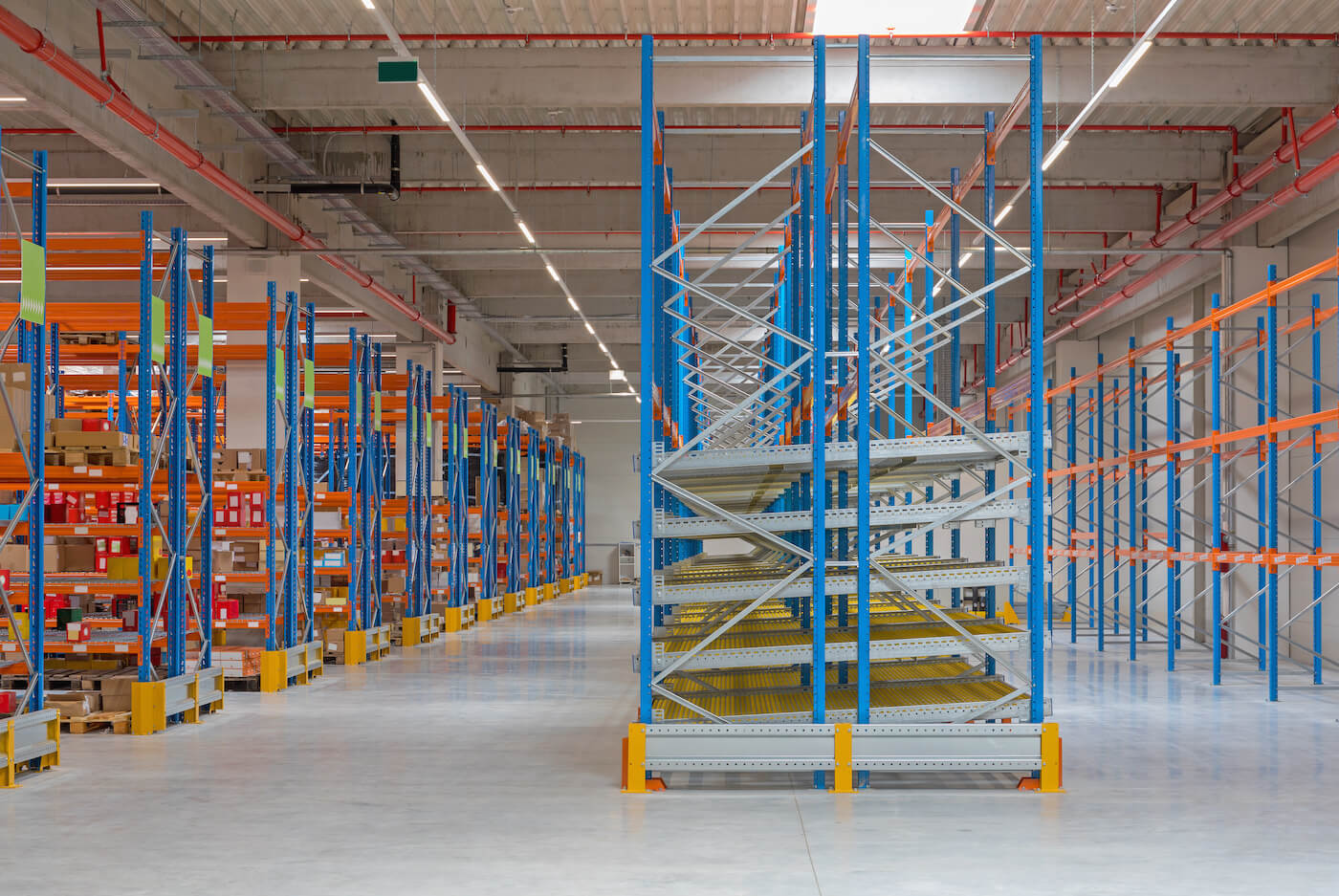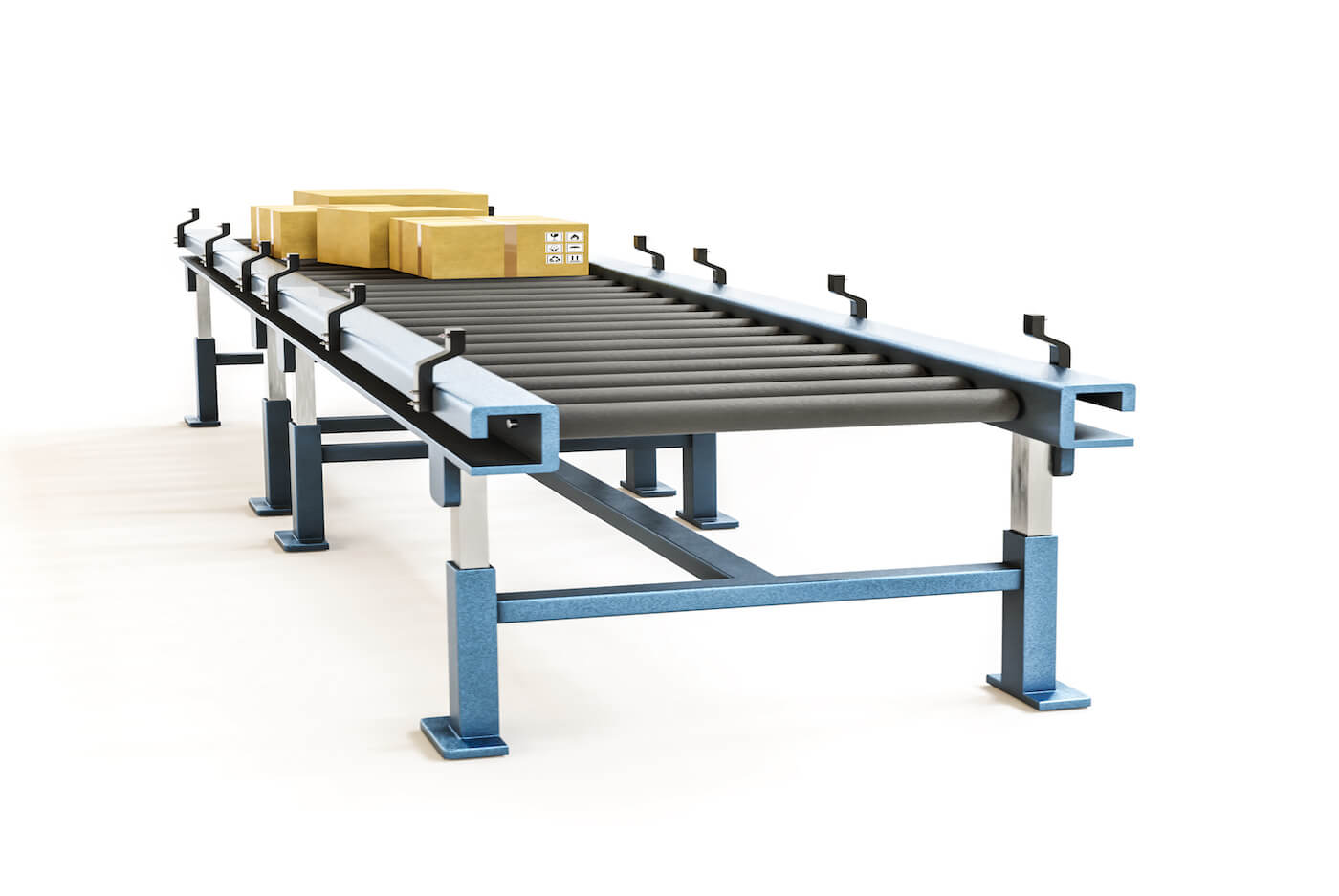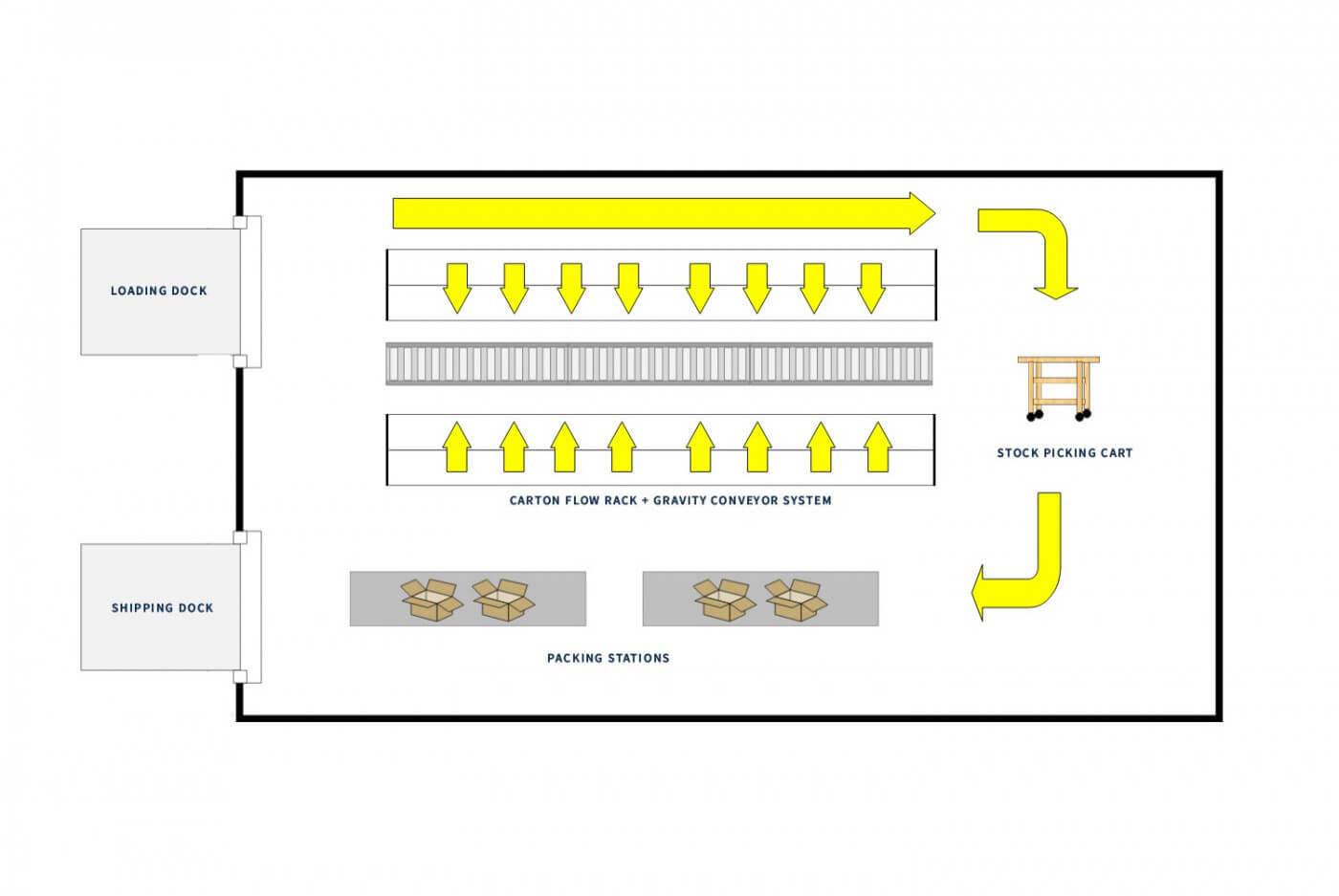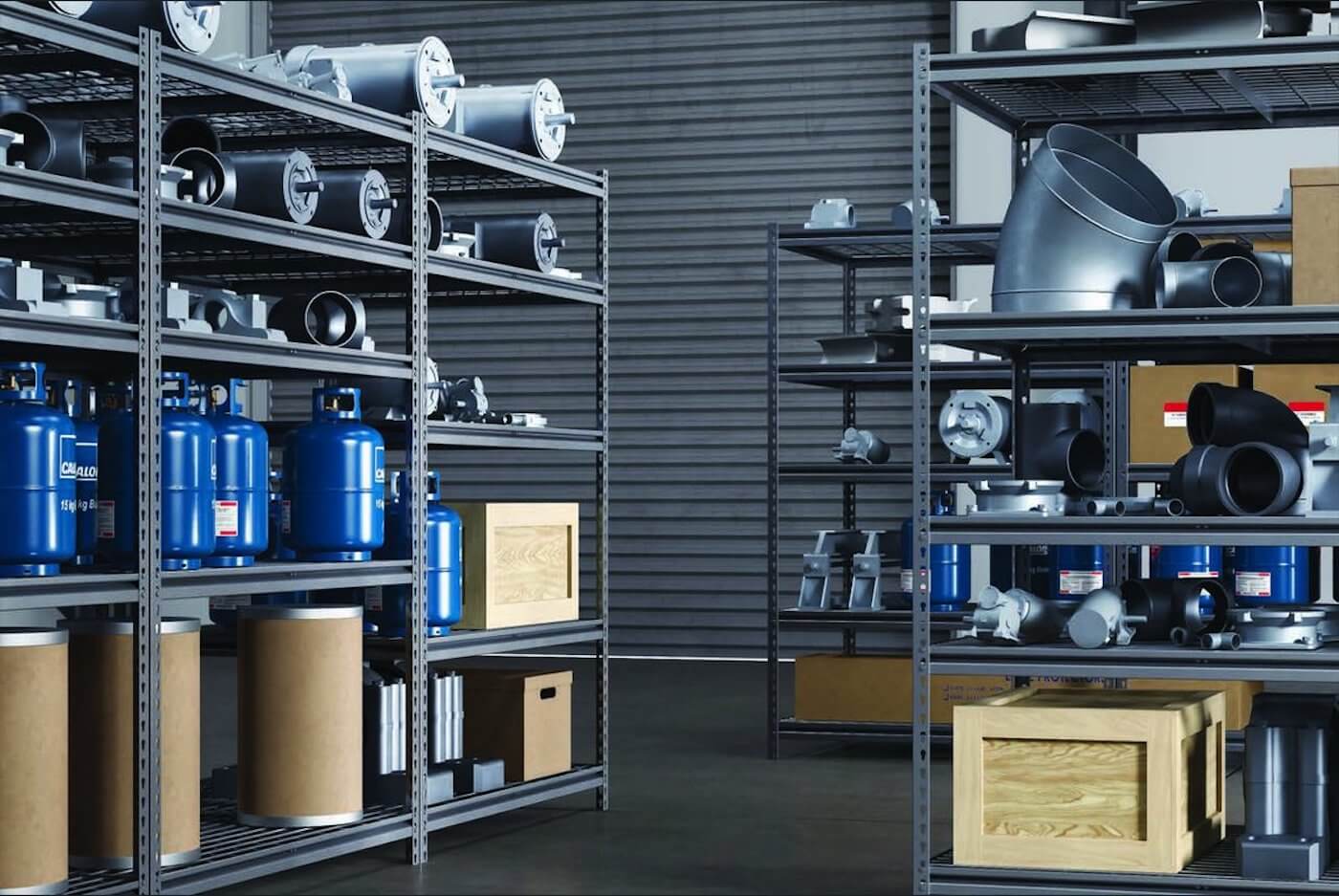In the age of ecommerce and online shopping, fulfilling a sales order to the customer’s specifications is arguably one of the most essential parts of the sale. Order picking is a step in the order fulfillment process. Simply put, it involves picking the correct order out of the warehouse inventory to be shipped to the customer. Within a warehouse, the picking process represents the steps, systems, and equipment used to pull products from the racking and shelves in order to send them to fulfillment. Order picking requires the integration of employees (pickers) and systems for a smooth operation.
As simple as that may sound, once you look beyond the surface, order picking is a complex process that requires a lot of planning. For the order picking process to run smoothly, the different components of the warehouse, from the layout to the employees, need to be optimized. For more information on how to build an effective warehouse picking system read our informative guide.
Why is Warehouse Order Picking important?
The picking process of a warehouse is important because it deals directly with getting products to the customers on time and accurately. A slow or inefficient picking process results in wasted resources for the warehouse. The potentially delayed receipt of products/shipments for the customer will also affect the business’s external reputation and brand.
It is easy to see why order picking is an essential step in order fulfillment. Observing this, large ecommerce businesses have streamlined their operations and have set high standards for the fulfillment process. Customers now expect fast delivery of products. Therefore, it is important for warehouses to be able to keep up with these expectations. It is crucial to the success of a warehouse fulfillment business to have high accuracy and speed in the picking process. Reports show that order picking accounts for over half a warehouse’s operating cost. In addition to the cost, it is also time-consuming, so streamlining is necessary.
What is Carton Flow?
Carton flow is a type of dynamic shelving that uses gravity to move products from the rear end of the shelf to the front. The product is loaded from the back of the shelf and moves to the front as space opens up. When the product is picked up from the front, another takes its spot. This allows products to always stay visible and organized. The rear loading allows picking to continue undisturbed while the product is being replaced on the other side.
Carton flow is a very efficient way to do order picking and should be considered by all warehouses that do fulfillment. It not only speeds up the picking process by providing easier access to products, but it also maximizes the storage space in your warehouse. It can be used with many different picking strategies. It is especially beneficial to businesses that prioritize a first-in first-out system (FIFO), where products constantly rotate and do not remain stagnant.
What are the Different Components of Carton Flow Rack System?
The frame is what holds the system in place. There are different types of frames, but the most common are layback and square front (or no layback). Square front frames are more commonly used when dealing with full cases that don’t need to be opened up, whereas layback frames are used in situations that require picking from an open case. Layback frames require a little more floor space compared to the square front
The shelves are attached to the frames and they hold the products. They also come in different varieties to accommodate different picking styles. Some of the more common styles are standard, shelf tray, knuckle, and reverse knuckle shelves. Knuckle (tilt) shelves offer more of a downward angle at the front, whereas reverse knuckle shelves straighten up at the front end of the shelf.
The roller track is the most important component of the carton flow system. The rollers are what helps the product move forward on the track. Depending on what type of carton flow system a warehouse uses, the roller tracks can be divided into lanes to keep products separate, or create a more evenly distributed roller bed. Each lane will typically hold a different SKU to keep things organized.
Lane guides may be used to keep the lanes separate, and prevent products from sliding over to another lane.
Carton flow clips are used to hold the frame and the shelves together.
One of the benefits of carton flow is that it can be installed directly into an existing pallet flow or pallet rack system, or can exist as a standalone system.
Different Types of Carton Flow Lanes and Systems
Full-Width Roller Track
Great for heavy loads, this type of racking offers higher capacity. Not as flexible, has to be ordered for specific carton sizes. If the carton is too small, you will be wasting space, whereas if it’s too big you will end up with issues in product flow. It includes a roller track that helps move products along the shelf.
Skate Wheel Tracks
Creates a more evenly spread roller track that doesn’t have to be configured for different package sizes. This type of carton flow works better for warehouses that have various sizes of product and many different SKUs. However, on the flip side, the lack of predetermined lanes may be a disadvantage for some warehouses.
Heavy-Duty Carton Flow
This type of carton flow is perfect for warehouses that store heavy and bulky products. The heavy-duty carton flow also has an evenly distributed roller track that has a full bed of rollers. Lane dividers may be used to separate different SKU. The main difference between this type of carton flow and the polycarbonate track is that the heavy-duty carton flow has steel wheels. It is also a more expensive type of carton flow.
Small-Diameter Plastic Wheel Carton Flow in Shelves
This light-weight and light-duty carton flow has plastic wheels that help move the product forward. It is lower priced, but has fallen out of popularity in recent years due to it not lasting as long as some of the other types of carton flow.
Angled shelves
The angle of the shelf allows for the product to slide down without the need for rollers. The shelves can be configured at different angles which gives the warehouse flexibility. Although, they have to be shorter than roller systems to ensure that the product doesn’t get stuck, which takes away the benefit of being able to store more product.
Things to Consider when Designing a Carton Flow System
Although carton flow is a great fit for many warehouses and product types, the type of racking and the different components you select will be specific to your business needs and product specifications. It’s important to consider the following factors before selecting a type of carton flow:
-
Are the products similar in size or do they differ a lot? If you don’t have varied product sizes then getting a full-width roller rack will work.
-
How heavy or bulky is the product that you store? For bulkier products, a plastic wheel system should be discouraged.
-
Do the products you carry change frequently? If this is the case, you may want to consider skate wheel tracks that are separated by modular lane separators.
-
Is your warehouse in the process of growing and changing? Carton flow is great for growing businesses since it can be modified and adjusted along the way. Just make sure to start off with a frame and shelving that will work for you in the long run.
-
Are your products picked in full cases or are they picked out of open cases? How your product is picked will determine if you should get layback or square front frames.
Other things to Consider When Designing your Carton Flow System
Standalone System
As mentioned earlier, carton flow can be installed onto an existing pallet rack or can be designed as a standalone system. The frame in this case can be a lighter frame than that of a pallet rack. They can also be installed in mezzanines to utilize space more efficiently.
Pallet Rack Mounted
A common way to design carton flow, this method allows for you to customize your existing warehouse without having to start over. Make sure to know the dimensions of your rack to find a good fit.
Pick Modules
Carton flow can also be mounted on top of or below a pallet rack to maximize storage space. This design allows for the pallet rack to be used as normal while adding space. One disadvantage is that the top or bottom shelf where the carton flow is mounted will not be as easily accessible as one that is eye level. However, this is a great option for warehouses with limited space.
How Does Carton Flow Speed Up your Picking Operation?
-
The efficiency of carton flow cuts down on labor costs drastically. Pickers spend less time organizing and looking for products.
-
Although the initial cost may be higher than static shelving, the longer-term savings make it more economical.
-
Because the products in the back don’t need to be accessed by employees, the shelving can be deeper. This allows for higher density storage and reduces space consumption.
-
A first-in first-out system that allows for effective rotation of inventory. The product can be replaced in the back while picking is taking place.
-
Carton flow is a modular system that allows for flexible configuration. One of the conveniences of carton rack is the ability to start off with a smaller system and add on as demand increases, which makes it perfect for small businesses.
-
The self-feeding system minimizes bending, reaching, and pulling of heavy products, which is much better for employee safety.
-
Carton flow doesn’t require motors or electricity to run, which brings down energy consumption costs in the warehouse.
What are some Disadvantages of Carton Flow?
-
Two types of employees are needed for carton flow to run efficiently. One group should be loading the products and one should be picking. This requires multiple touches with the product.
-
The upfront cost of carton flow is higher than static shelving. For some small and newer businesses, this may create a barrier.
-
Carton flow requires some planning based on the type of product that your warehouse carries. If your products vary seasonally, you have a lot of different container sizes and weights, etc. it may be difficult to design a system that will work for all of your picking needs.
American Storage and Logistics Has All of your Warehouse Picking and Carton Flow Needs
Whether you’re setting up a new warehouse and designing a pick system from scratch or reconfiguring your existing warehouse to improve your current picking operations, American Storage & Logistics has all of the equipment you need to build cost-saving and efficient pick modules. We have a complete inventory of in-stock carton flow in both new and used condition, ready for same-day pickup or next-day delivery. Click here to shop online today! If you have any questions about building a pick system or the different types of carton flow, give us a call at 616-246-9800 to speak with a sales engineer.





